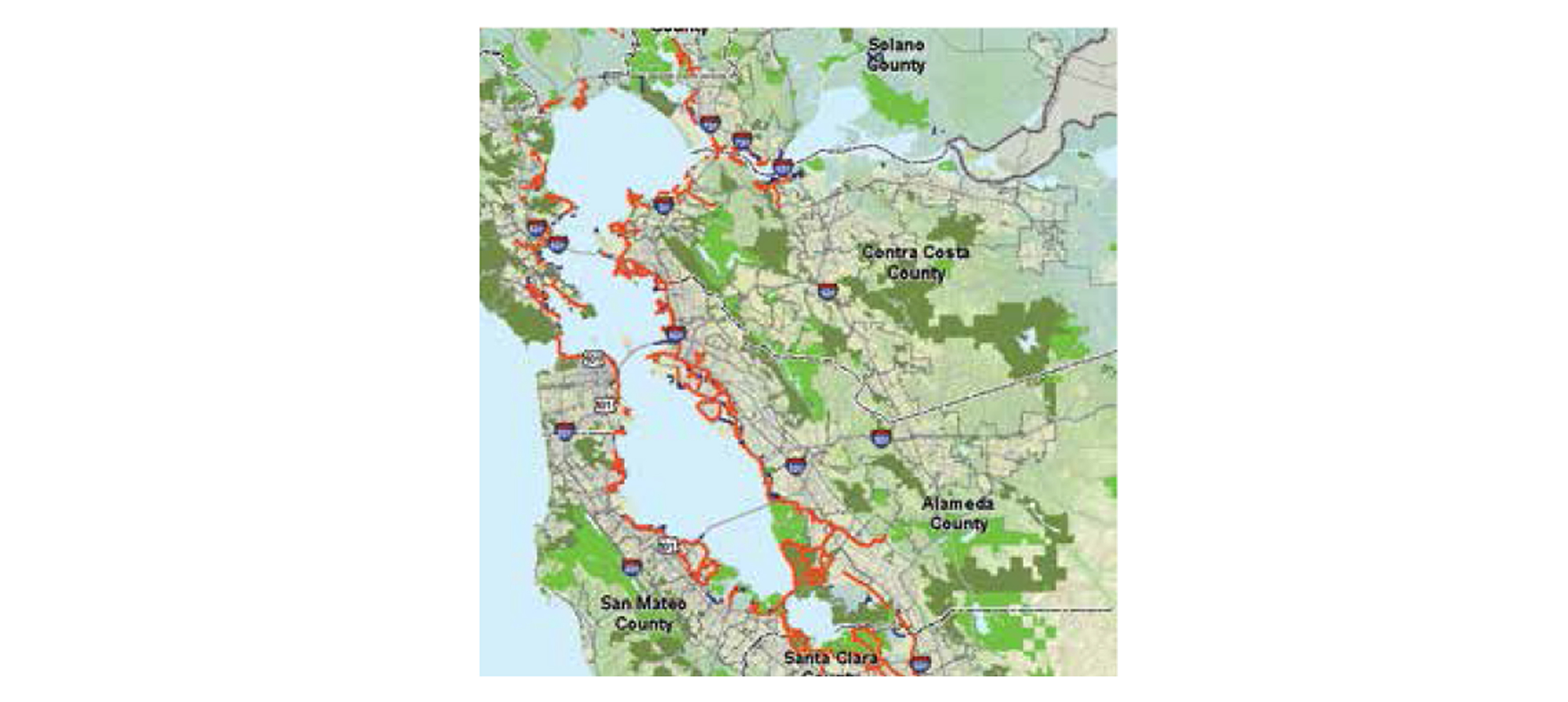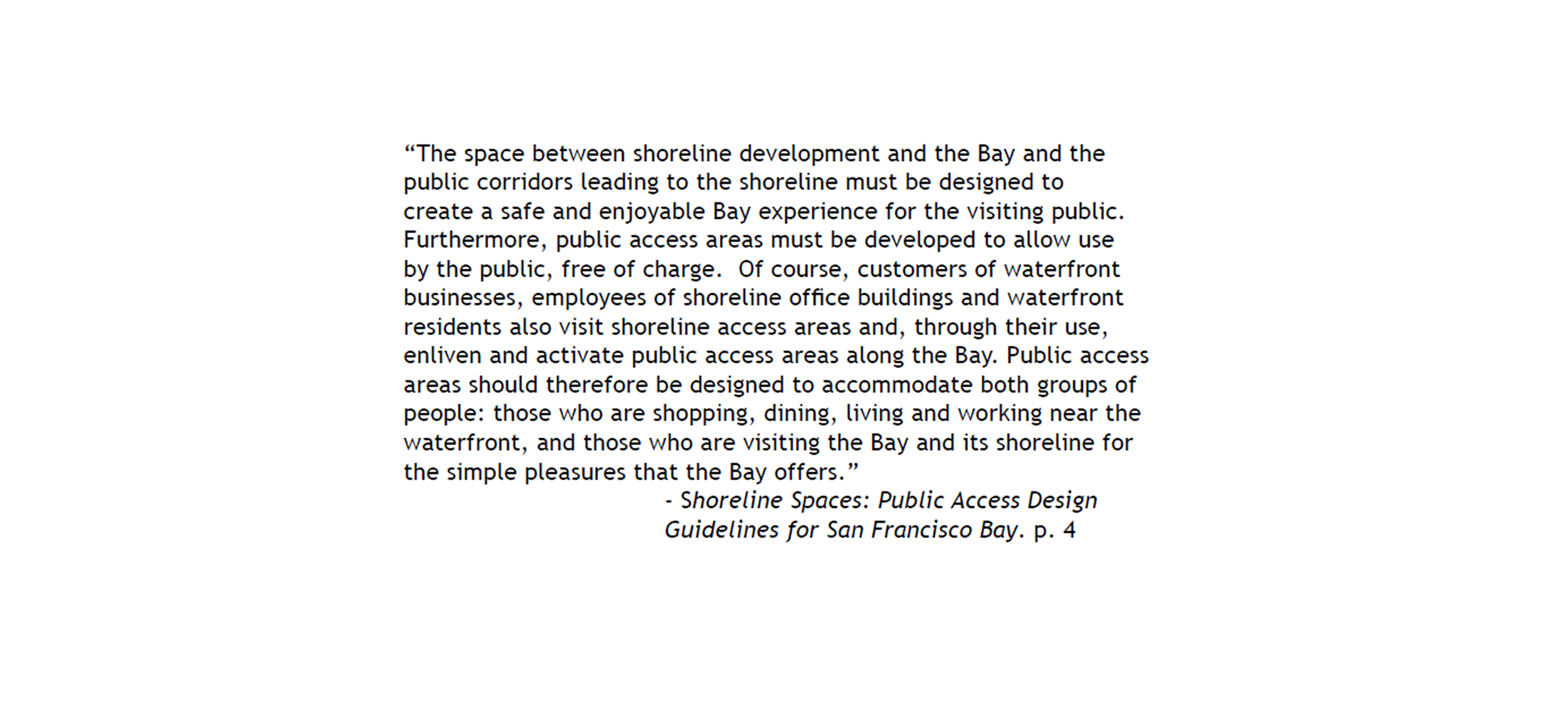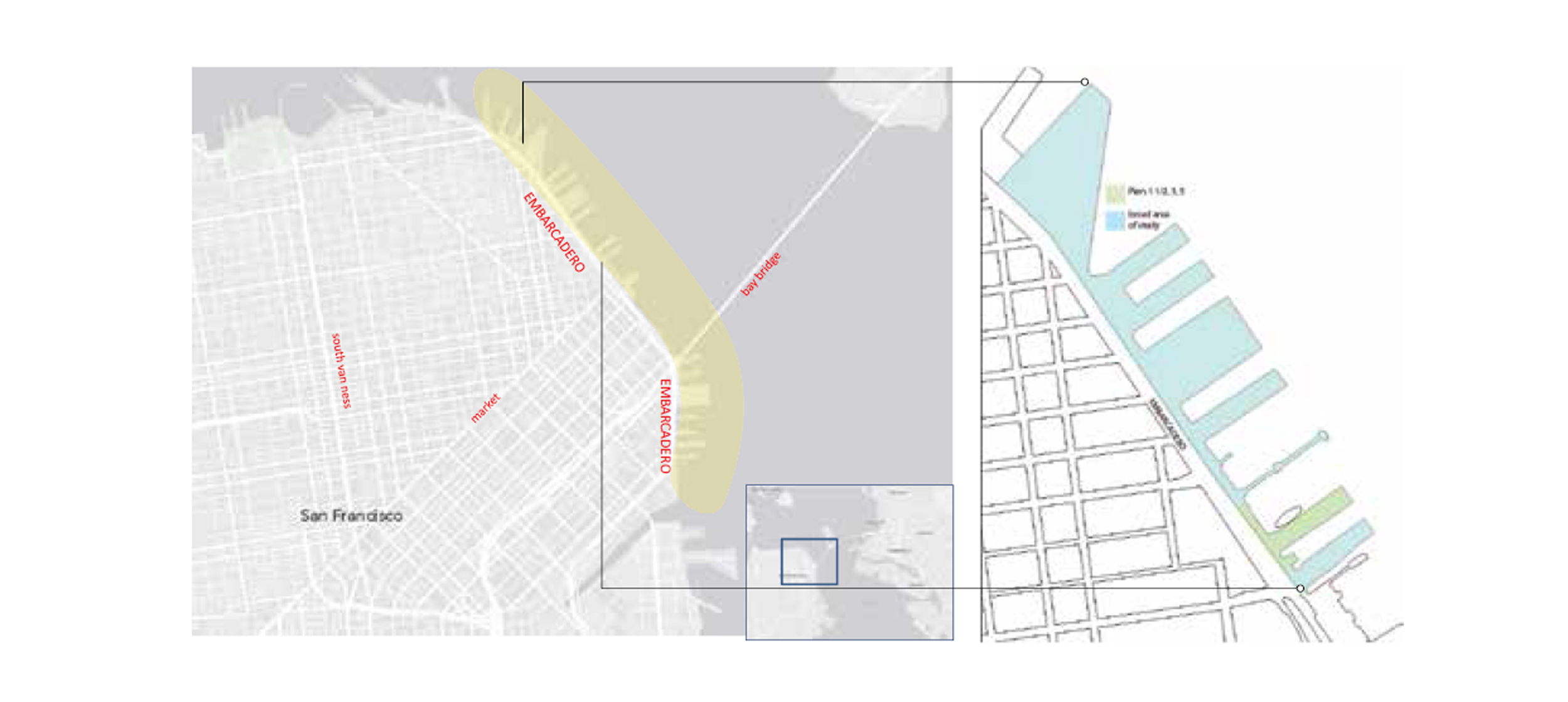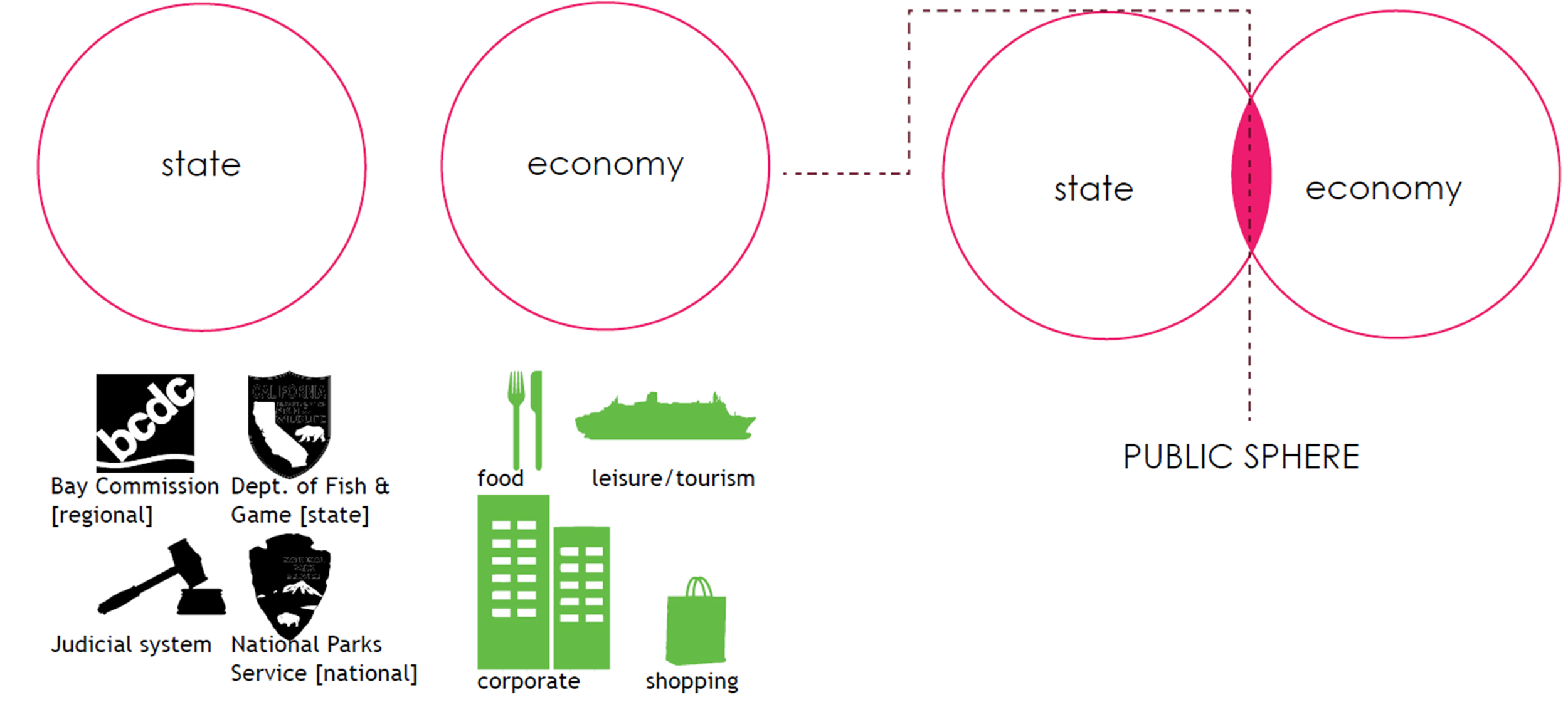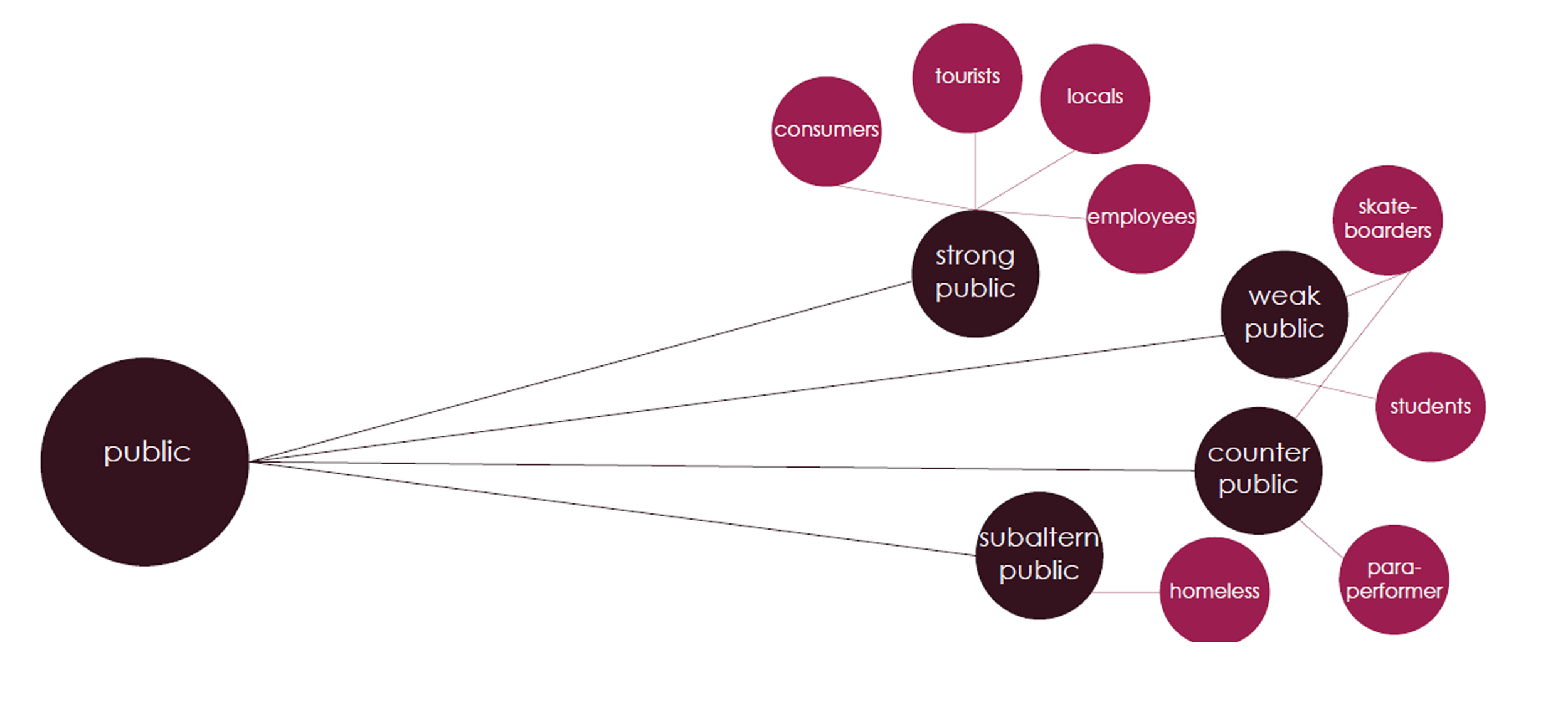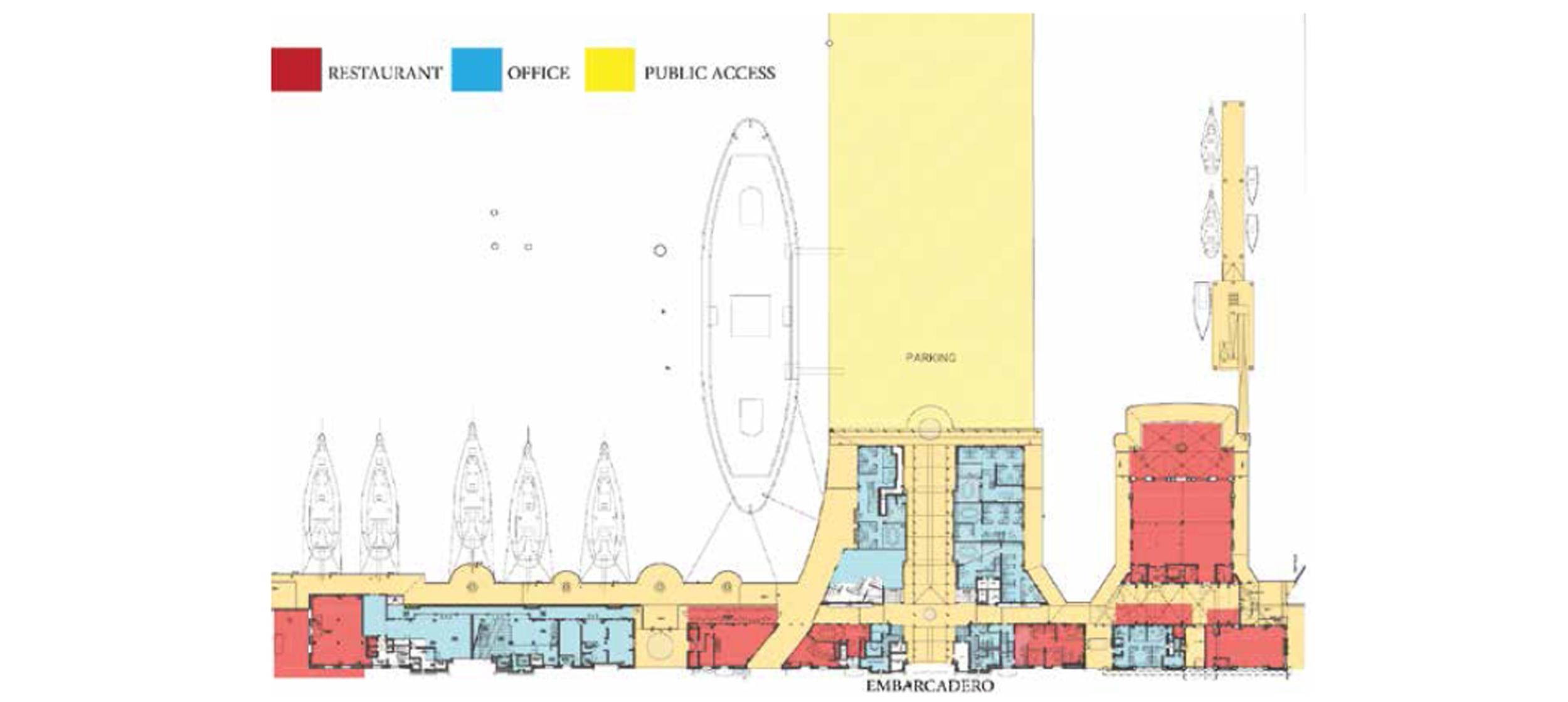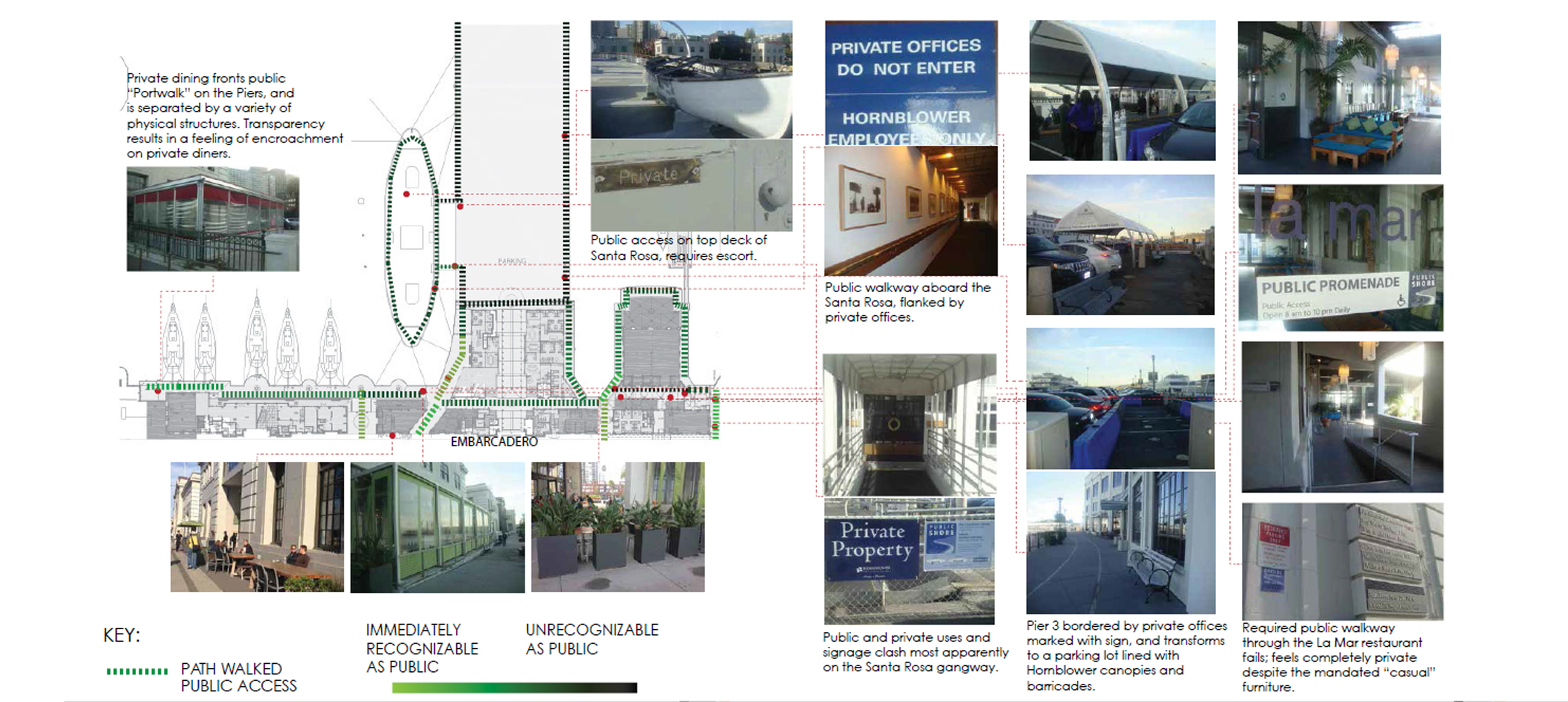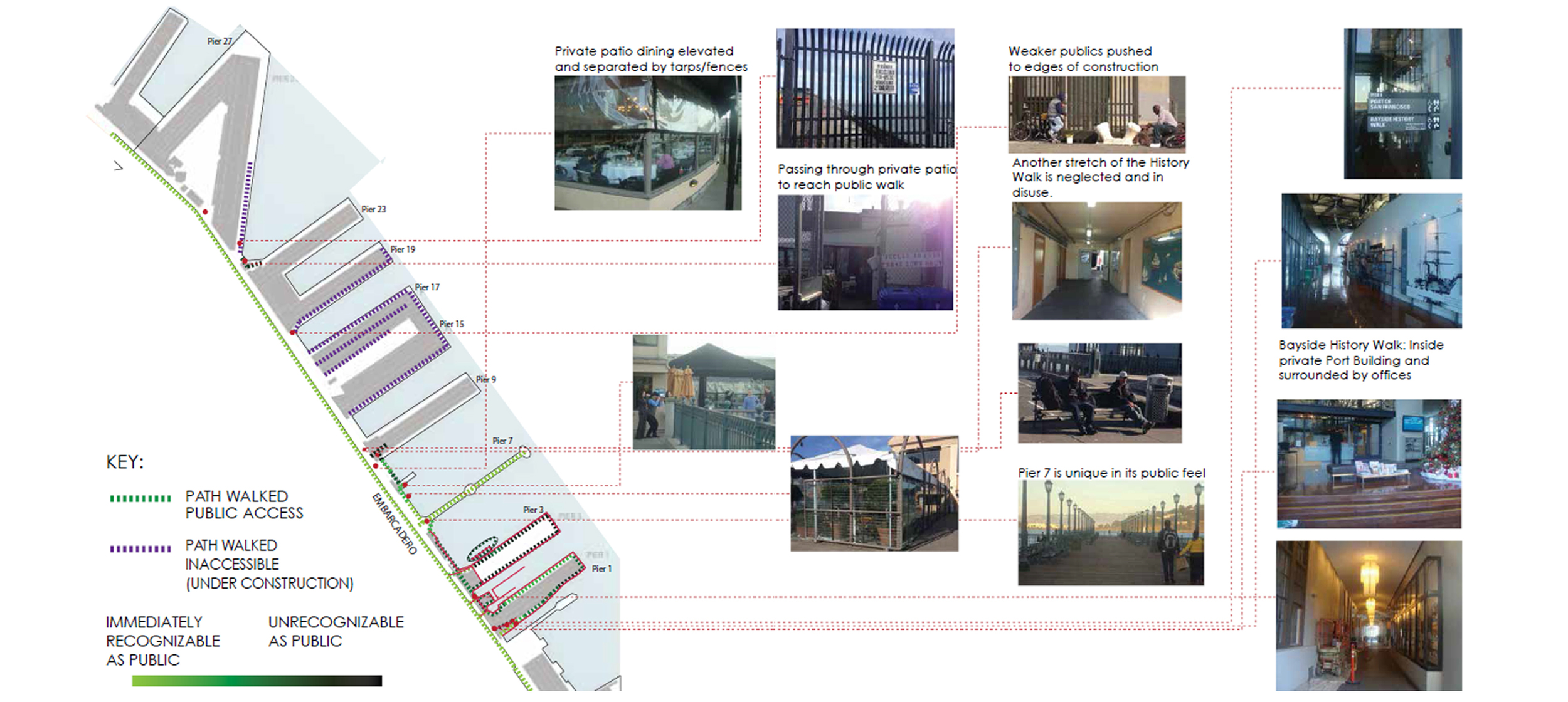Spaces of Contradiction: Public Space Along San Francisco's Embarcadero
UC Berkeley graduate seminar, 2012
Premise: Investigate the roles of urban commercialization and regional governance in the shifting meaning of public space along the Embarcadero shoreline in San Francisco, California.
Case study: Piers 1 ½-3-5 rehabilitation project (2006), including the Ferryboat Santa Rosa. Over the past decades, these historically private, specialized properties have been reconceptualized as vibrant waterfront spaces, specifically through public access required by the San Francisco Bay Conservation and Development Commission.
Methods of Discovery: Archival research at the BCDC, field observation, interviews, mapping, and photographic documentation informed a multifaceted perspective of what constituted “the public” and “public space.”
Insights & Interpretation: There is not one singular public on the Embarcadero, bur rather multiple publics with different demographics and needs. The conceptual development of the Embarcadero was marked by a series of contradictions – conflicting state and economic interests and disjunctions between imagined and actually existing publics. The project resulted in design recommendations for more inclusive public spaces that acknowledge and build for multiple users, clarifying public and private areas, and rehabilitating neglected public shoreline areas.
